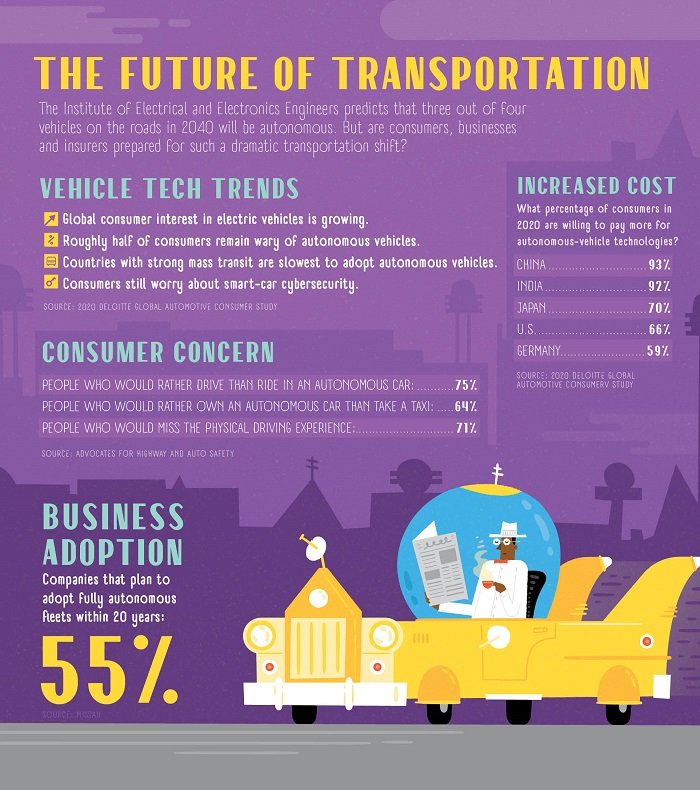 In 2020, safety concerns and regulatory hurdles are putting the brakes on the mainstream adoption of autonomous vehicles. (Illustration by Shaw Nielsen is from the November 2020 issue of NU Property & Casualty magazine.)
In 2020, safety concerns and regulatory hurdles are putting the brakes on the mainstream adoption of autonomous vehicles. (Illustration by Shaw Nielsen is from the November 2020 issue of NU Property & Casualty magazine.)
A few years back, automotive technologists such as Tesla CEO Elon Musk were downright boastful about the speedy timeline in which they anticipated bringing fully autonomous vehicles to the mainstream marketplace.
Recommended For You
Want to continue reading?
Become a Free PropertyCasualty360 Digital Reader
Your access to unlimited PropertyCasualty360 content isn’t changing.
Once you are an ALM digital member, you’ll receive:
- Breaking insurance news and analysis, on-site and via our newsletters and custom alerts
- Weekly Insurance Speak podcast featuring exclusive interviews with industry leaders
- Educational webcasts, white papers, and ebooks from industry thought leaders
- Critical converage of the employee benefits and financial advisory markets on our other ALM sites, BenefitsPRO and ThinkAdvisor
Already have an account? Sign In Now
© 2025 ALM Global, LLC, All Rights Reserved. Request academic re-use from www.copyright.com. All other uses, submit a request to [email protected]. For more information visit Asset & Logo Licensing.








